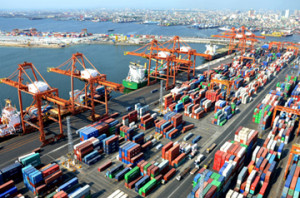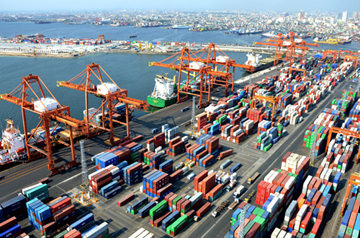
PORT operators International Container Terminal Services, Inc (ICTSI) and Asian Terminals, Inc (ATI) have filed a petition with the Philippine Ports Authority (PPA) for a 21% increase in cargo-related handling fees at the Manila International Container Terminal and South Harbor, respectively.
In justifying its petition, ICTSI cited its investments in container-handling equipment, information technology upgrades, traffic management system and the high costs of power, diesel and daily wage as reasons for the new arrastre rates.
The same reasons were provided by ATI in a separate paper.
The PPA has formed a team to hear the petition; a public hearing has been set for March 20.
Over two years ago, PPA allowed ICTSI and ATI to hike their cargo-related handling fees by 15% in two tranches – the first 8% increase implemented in May 2009 and the remaining 7% in January 2010.
In addition, PPA had allowed the operators to impose a 17% increase in vessel-related cargo-handling rates also in two tranches — the first 11% in November last year and the balance for application in May this year.
Exporters
Meanwhile, Philippine exporters have warned against the proposed increase.
“Of course, we will again be at the losing end because this hike in cargo fees will also create an upward adjustment in prices,” said Rashmi Singh, chief executive officer of Lightworks Resources, Inc. Lightworks makes and exports indoor/outdoor furniture, water features, iconic sculptural pieces, artwall and objets d’art.
But even without the proposed increase, exporters especially in Mindanao and Visayas have already been complaining about the high cost of shipping in the country. Testimonies of food exporters, for example, have proven it is more expensive to ship fruits from Davao to Manila than from Manila to Hong Kong.
Various factors have been identified as the root causes of this age-old problem, including the cabotage principle that restricts international vessels from picking up cargoes from domestic ports, and the conflict of interest seen in the mandate of the PPA. The PPA gains a share from port fee increases by virtue of Letter of Intent 1005-A.
Dennis Orlina, president of the Philippine Chamber of Handicraft Industries, echoed a similar sentiment as Singh’s. He said that at the recent Manila FAME International where Lightworks’ and other Philippine furniture, furnishings and fashion products are exhibited bi-annually, buyers have been pressuring exporters to lower their prices.
“We are near breaking point. Margins are already so tiny that there is no more room for price flexibility,” said Orlina. “We are looking at government intervention to address these competitiveness issues if it wants the export industry to hit its growth targets”.
The Philippine Exporters Confederation, Inc. (PHILEXPORT), the umbrella organization of Philippine exporters, has expressed opposition to these fee increases in various fora and position papers.
PHILEXPORT president Sergio R. Ortiz-Luis Jr noted that the industry already faces a number of competitiveness issues, including a strong peso and high energy and labor cost. All these add to current economic problems of major markets, the United States and Europe.
To help address these setbacks, PHILEXPORT works with the Export Development Council (EDC) and National Competitiveness Council to advocate for executive and legislative measures. Among pending bills being pursued are the review of the mandate of the PPA and the computerization of Customs procedures through the Customs Modernization and Tariff Act.
At the Executive level, the EDC and PHILEXPORT have also facilitated the implementation of Executive Order 554 signed by then President Gloria Macapagal-Arroyo eliminating fees and charges imposed on export clearances, inspections, permits, certificates, and other documentation requirements to help exporters and the industry.
Photo courtesy of ICTSI





